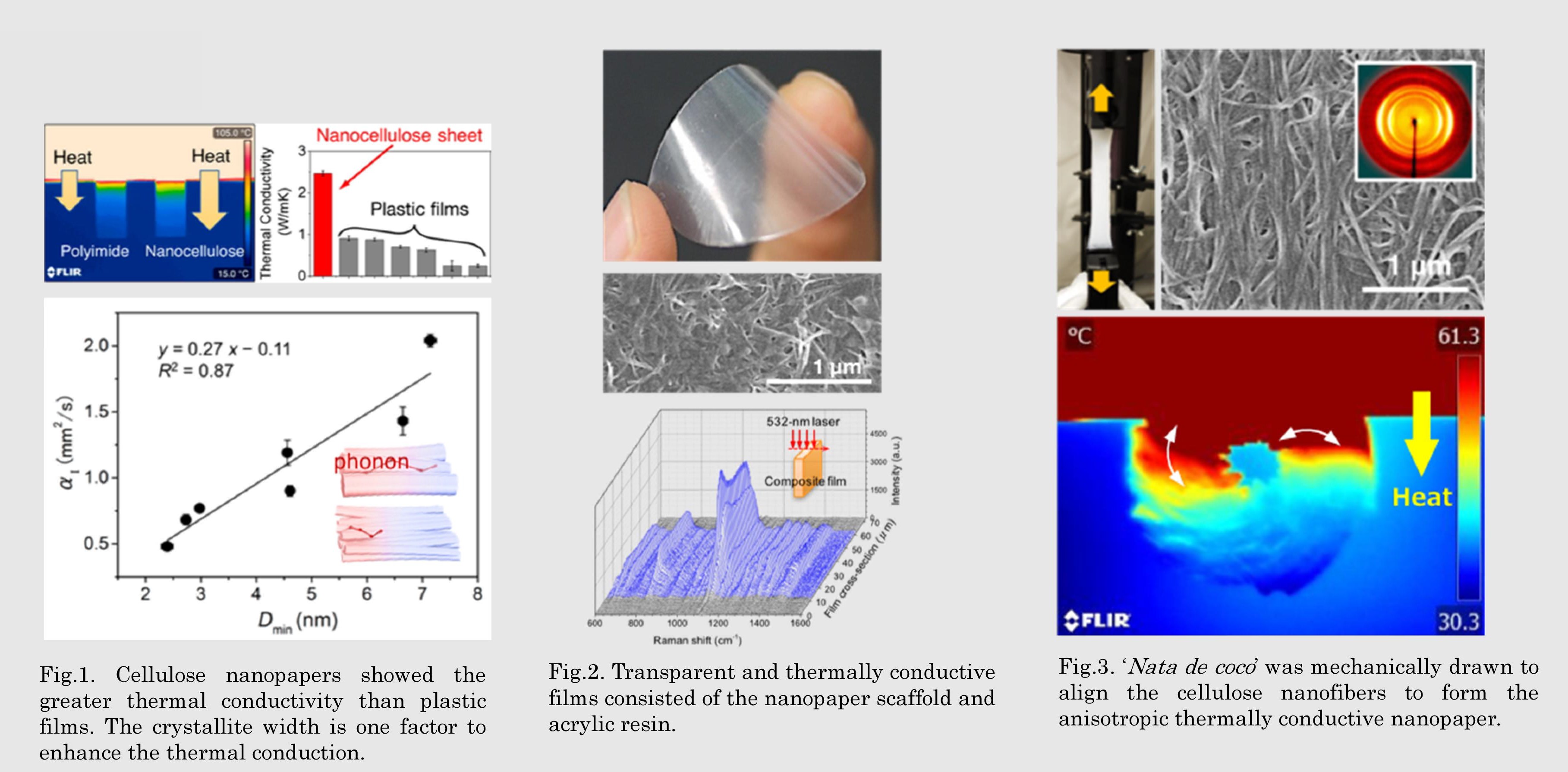ISIR
The Institute of Scientific and Industrial Research, Osaka University
大阪大学
産業科学研究所

LAST UPDATE 2018/06/04
-
研究者氏名
Researcher Name上谷幸治郎 Kojiro UETANI
助教 Assistant Professor -
所属
Professional Affiliation大阪大学産業科学研究所
自然材料機能化研究分野
The Institute of Scientific and Industrial Research, Osaka University
Department of Functionalized Natural Materials -
研究キーワード
Research Keywords伝熱異方性ナノセルロース
配向制御
光学解析
Anisotropic thermally conductive nanocellulose
Orientation control technique
Optical analysis
- 研究テーマ
Research Subject -
ナノセルロース固有特性を活かした新材料開発
Functionalized materials based on intrinsic properties of nanocelluloses
研究の背景 Background
地球上にもっとも膨大に存在する高分子セルロースは、紙パルプからレーヨン・セルロース誘導体といった多様な構造に変換され、広範な用途に活用されています。その長い歴史にも関わらず、新たに「セルロースナノファイバー」という形態が開発されました。植物繊維が本来持つナノファイバーの構造的特徴をよく知り、うまく活かすことで、サステイナブルな循環社会構築に向けた高機能材料の開発に貢献できます。
Cellulose, the most abandunt polymer on earth, has been utilized for various purposes by being converted from paper/pulps to rayon and derivatives. Despite of the long history of cellulose utilization, the novel morphology “cellulose nanofiber” has recently been developed. It is important to understand the structural features and find the quality use of these natural nanofibers for developing the functional materials contributing the sustainable low-carbon society.
研究の目標 Outcome
紙や衣服の構成ポリマーであるセルロースは、長らく断熱的であると考えられており、断熱建材や断熱容器として活用されています。しかし結晶性セルロースナノファイバーを成膜した「ナノペーパー」の形態になると、意外に高い熱伝導性を示すことが明らかになってきました。断熱材を伝熱材としてうまく変換することにより、森林資源をもとにした新しい材料分野の創生が期待されます。このように、セルロースナノファイバーの固有特性に立脚した材料展開を進めることで、天然素材における真の有効活用を目指します。
Cellulose is reconized as the heat insulator and traditionally used for the building insulator or insulating containers. However, the cellulose nanofiber sheets, called nanopapers, have found to show the relatively high thermal conductivity. We aimed to develop the functional materials based on the intrinsic properties of cellulose nanofibers.
研究図Research Figure

文献 / Publications
Biomacromolecules 2015, 16, 2220−2227, J. Mater. Chem. C 2016, 4, 9697−9703, ACS Macro Lett. 2017, 6, 345−349, Sci. Technol. Adv. Mater. 2017, 18, 878−892.
研究者HP
- uetani
 eco.sanken.osaka-u.ac.jp
eco.sanken.osaka-u.ac.jp - http://www.dma.jim.osaka-u.ac.jp/view?l=ja&u=10009186&a2=0000034&o=affiliation&sm=affiliation&sl=ja&sp=1